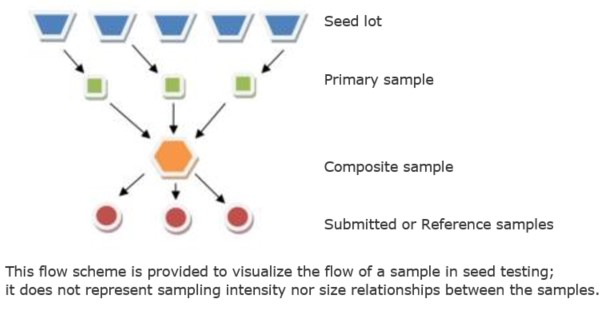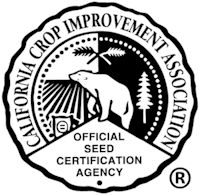Section 19. Sampling
Every seed lot eligible for certification must be sampled after the seed has been conditioned. Proper seed sampling is the first step in accurate seed testing. The Federal Seed Act and California Seed Law require that seed offered for sale must be identified in accordance with truth-in-labeling laws. To accurately reflect the true quality of seed lots, the CCIA requires that a representative seed sample must be taken from a seed lot for certification and labeling purposes. All samples submitted for seed certification must be taken by a trained, CCIA certified seed sampler. It is the responsibility of the certified seed sampler to assure that all sampling is done in accordance with approved sampling methods and equipment as defined by the following:
19.1 California Seed Law Sampling Section (Title 3. Food and Agriculture, Division 4, Chapter 5, Subchapter 3. Seed Inspection, Article 3, Inspection and Sampling - Page 23).
19.2 Federal Seed Act Sampling Section (Title 7, Part 201.37 to 201.44).
19.3 AOSCA Seed Certification Handbook Sampling Section (Section "Sampling Procedures for the Inspection of Seed" - Page 119).
19.4 AASCO Handbook on Seed Sampling. Association of American Seed Control Officials. Revised Edition. 2015.
A primary sample is obtained from a seed lot during one sampling action. Primary samples must be taken using approved methods and equipment such as appropriate triers for free-flowing seed in bags and mini-bulk bins and in bulk while ensuring compliance with sampling intensity requirements. Stream sampling shall be used when seed is in large volumes in bulk. Appropriate hand sampling must be used if seed is non-free flowing, chaffy or pelleted or coated. To ensure validity of the testing methods, the aim in all sampling scenarios must be to collect enough seed to meet the minimum sample size requirements for the crop kind being sampled. All primary samples taken from a seed lot must be comingled to constitute a composite sample (refer to flow chart below). The composite sample must be thoroughly mixed by passing it through a riffle divider (or any other approved divider) three times prior to subsequent divisions to downsize to a sample of the required size for seed testing (see Submitted Sample Sizes for Certification for sizes).

| Reviewed October 2022 | Next Section |
